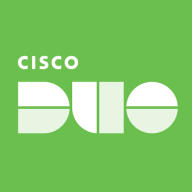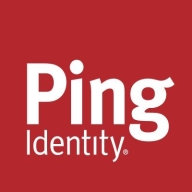

Cisco Duo and PingID are both highly regarded multi-factor authentication solutions, each catering to different security needs and user expectations. Users generally prefer Cisco Duo for its intuitive interface and robust performance, while PingID stands out with its customizable features and advanced integration options.
Features: Cisco Duo offers easy-to-use authentication methods, extensive integration capabilities covering a wide range of applications and services, and robust performance. PingID provides detailed customization, advanced security features, and versatile integration options suitable for complex security requirements.
Room for Improvement: Cisco Duo could benefit from enhancements in its biometric authentication methods, reporting features, and mobile app performance. PingID users suggest improvements in its mobile app performance, user account management interface, and ease of use for less technical users.
Ease of Deployment and Customer Service: Deploying Cisco Duo is straightforward with minimal technical hurdles, backed by a responsive support team. PingID's deployment process is comprehensive and requires a higher level of technical expertise, but its customer service is also well-regarded, though some users find it less accessible compared to Cisco Duo's support.
Pricing and ROI: Cisco Duo is highlighted for its cost-effectiveness and satisfactory return on investment, particularly for small to mid-sized businesses. PingID, while pricier, delivers value through its extensive feature set and adaptability, making it a worthwhile investment for larger enterprises or complex security environments.
I think Cisco Duo offers a good return on investment for startups, newer organizations, or those utilizing cloud-based applications.
However, the response time could be faster.
I find Cisco's technical support to be good but not excellent.
I have reached out to technical support for troubleshooting SAML certificate mismatches and federated errors between Ping and enterprise apps.
I believe Cisco Duo is very scalable because it is cloud-based.
Cisco should allow easier integration with third-party equipment because Cisco's own equipment is expensive.
Cisco Duo is a modern product that does not support older applications, lacking backward compatibility.
I would like to enable ServiceNow Generative AI for auto-diagnosing PingFederate SSO failures and suggest remediation steps.
The approximate cost is around eighty dollars per user.
I find the pricing of Cisco Duo to be reasonable.
The setup cost is reasonable, estimated at around six euros per month.
The client VPN and multi-factor authentication (MFA) features are the most useful.
This setup makes it scalable, as the deployment section is in the cloud, allowing the installation of agents according to needs.
The platform enhances security measures by analyzing multi-factor authentication attempts, highlighting suspicious patterns, and generating compliance reports.


Cisco Duo is a cloud-based identity security tool offering easy and wide-ranging access protection for users and devices worldwide. It assures identity-first security with clear visibility across multi-cloud, hybrid, and on-premises environments.
Cisco Duo provides robust multi-factor authentication and seamless integration capabilities with existing infrastructures. Appreciated for its stability and speed, it supports distributed workforces by securing VPN access, corporate networks, and cloud services. Duo’s comprehensive identity ecosystem supports easy deployment and management through a single-pane-of-glass management interface. It seamlessly merges with popular platforms like Active Directory and Office 365 across diverse hardware.
What are Cisco Duo’s Essential Features?Cisco Duo finds extensive applications across education, finance, retail, and government sectors by fortifying network and application access security. Organizations leverage it for its MFA capabilities, integrating with ERP systems, ensuring protected connectivity with VPN and cloud-based services, crucial in maintaining secure and efficient operations.
We monitor all Authentication Systems reviews to prevent fraudulent reviews and keep review quality high. We do not post reviews by company employees or direct competitors. We validate each review for authenticity via cross-reference with LinkedIn, and personal follow-up with the reviewer when necessary.